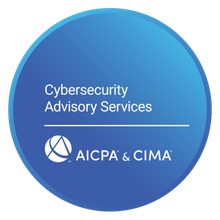Difference Between Hashing and Encryption in Modern Cybersecurity
In today's digital era, the security of sensitive information is paramount, particularly in professions dealing with vast amounts of personal and financial data. As tax and accounting professionals navigate this landscape, understanding the difference between hashing and encryption becomes essential. These two pillars of cybersecurity, often used interchangeably but vastly different in function and application, are critical in safeguarding client information against ever-evolving cyber threats.
At Bellator, we recognize the unique challenges faced by those in the tax industry – from sole proprietors to large accounting firms. Each day, you handle Personally Identifiable Information (PII) and sensitive financial records, making robust cybersecurity measures not just a best practice, but a necessity. This article aims to shed light on the distinct roles of hashing and encryption in modern cybersecurity, offering clarity and actionable insights for professionals tasked with protecting client data.
Understanding these technologies is not just about compliance with regulations like those set forth by the IRS and FTC; it's about building a foundation of trust with your clients. They entrust you with their most sensitive data, and it's your responsibility to protect it with the most effective tools and practices available. As we explore the differences between hashing and encryption, we invite you to consider how these technologies are implemented within your own practice and how they contribute to a comprehensive cybersecurity strategy.
Stay tuned as we delve deeper into each technology, providing you with the knowledge you need to make informed decisions about your cybersecurity measures. And remember, we're always here to support you with expert advice and resources tailored to the needs of tax professionals.
Deep Dive into Encryption
Encryption is a cornerstone of digital data security, a critical tool in the arsenal of tax and accounting professionals. At its core, encryption transforms readable data, known as plaintext, into a scrambled, unreadable format called ciphertext. This process ensures that sensitive information, such as client tax records or financial statements, remains confidential and secure from unauthorized access.
There are two primary types of encryption: Symmetric and Asymmetric. Symmetric Encryption uses the same key for both encrypting and decrypting data. It's akin to having a single key that both locks and unlocks a safe - straightforward and efficient, yet requiring secure key management. Asymmetric Encryption, on the other hand, utilizes two different keys – a public key for encryption and a private key for decryption. This method is similar to a mailbox with a mail slot (public key) where anyone can drop a letter, but only the owner with a unique key (private key) can access the contents.
In the context of tax preparation and accounting, encryption is invaluable for protecting client data during transmission (like sending files over the internet) and while stored (such as in cloud storage or on physical servers). By encrypting this data, tax professionals can ensure that even if a cybercriminal intercepts it, the information remains unreadable and secure.
For a more detailed guide on implementing encryption in your practice, explore our comprehensive article: "Encryption Best Practices for Tax Professionals". This resource offers practical advice and in-depth insights, ensuring your encryption strategies align with industry standards and regulatory requirements.
Exploring the World of Hashing
Hashing is another fundamental concept in the realm of cybersecurity, especially critical in professions handling sensitive data like tax and accounting. Unlike encryption, which scrambles data into a reversible, encrypted format, hashing is a one-way process. It converts data into a unique, fixed-size string of characters – a hash. This hash acts as a digital fingerprint; even the slightest change in the original data results in a completely different hash.
What makes hashing indispensable is its irreversibility. Once data is hashed, it cannot be converted back to its original form. This attribute is particularly useful for password storage. When a user sets a password, the system stores its hash instead of the actual password. During login, the system hashes the entered password and compares it with the stored hash. This method ensures that even if a data breach occurs, the actual passwords remain secure.
In the tax and accounting sector, hashing is utilized to verify the integrity and authenticity of data. For instance, when transmitting tax forms electronically, hashing can confirm that the documents have not been tampered with in transit.
To delve deeper into how hashing can be effectively implemented in your cybersecurity strategy, read our in-depth discussion on hashing techniques. This guide provides valuable insights and practical tips, helping you to enhance the security of your clients' sensitive information.
Comparing Hashing and Encryption
The core difference between hashing and encryption lies in their primary functions and operational mechanisms. While both are essential in the cybersecurity toolkit, especially for professionals in the tax and accounting sector, they serve distinct purposes.
Encryption is designed for confidentiality. It secures data by making it unreadable to unauthorized individuals, with the capability of reversing the process to retrieve the original information. This reversible nature is vital in scenarios where data needs to be accessed and read by authorized parties, such as when sharing client tax files securely between professionals and clients.
Hashing, in contrast, is about integrity and authentication. It ensures that data remains unchanged and authentic. Since hashing is a one-way process, it does not allow for the original data to be retrieved from the hash. This makes it ideal for verifying data authenticity, like ensuring the integrity of a file or securely storing passwords.
In practical terms, tax professionals use encryption to protect client data during transmission and storage, ensuring confidentiality. Hashing is used to verify that the data received or stored has not been altered, maintaining its integrity. For example, when submitting tax forms electronically, hashing can be used to ensure the form has not been tampered with during transmission.
Applications in Tax and Accounting
Understanding the applications of hashing and encryption is crucial for tax and accounting professionals who are responsible for safeguarding a wealth of sensitive information. These technologies are not just tools for cybersecurity; they are integral to maintaining client trust and adhering to legal compliance standards.
Encryption plays a pivotal role in protecting client Personally Identifiable Information (PII) and financial data. In the tax industry, where data is frequently transmitted electronically – whether it's submitting tax forms to the IRS or sharing financial statements with clients – encryption ensures that this information remains confidential and secure from interception. Moreover, storing client data, whether on cloud services or local servers, demands encryption to prevent unauthorized access in the event of a breach.
Hashing, while less visible to the end user, is equally important. It's commonly used in the verification of the integrity of transmitted data. For instance, when tax professionals submit electronic filings, hashing can be used to ensure that the documents have not been altered during transmission. This process adds an extra layer of security, providing assurance that the information remains intact and unchanged from its original state.
Beyond the direct handling of data, these technologies also help tax professionals meet the stringent requirements set by regulatory bodies. The IRS and FTC have established guidelines mandating the use of robust security measures to protect consumer financial information. By implementing proper encryption and hashing strategies, tax practices not only enhance their security posture but also ensure compliance with these regulations.
Best Practices for Tax Professionals
Incorporating effective hashing and encryption techniques into a cybersecurity strategy is more than a technological undertaking; it's about fostering a culture of security within your organization. Tax professionals must stay vigilant and informed to protect sensitive client data effectively. Here are some best practices to consider:
-
Regular Training and Awareness: Keep your team updated on the latest cybersecurity threats and practices. Regular training sessions can help in understanding the nuances of technologies like encryption and hashing and their application in day-to-day operations.
-
Choosing the Right Tools: Select encryption and hashing tools that are robust and compliant with industry standards. Invest in software solutions that are known for their security features and are regularly updated to combat new cyber threats.
-
Implementing Strong Policies: Develop and enforce strict policies regarding data handling and protection. This includes guidelines on how to securely transmit and store data, password management, and protocols for responding to data breaches.
-
Data Access Management: Limit access to sensitive data based on roles and necessity. Implementing access controls ensures that only authorized personnel can view or modify critical data, thereby reducing the risk of internal threats.
-
Regular Audits and Compliance Checks: Conduct regular security audits to assess the effectiveness of your encryption and hashing strategies. Staying compliant with regulatory requirements, such as those from the IRS and FTC, is not only mandatory but also reinforces trust with your clients.
-
Stay Updated with IRS and FTC Guidelines: The IRS and FTC frequently update their guidelines and recommendations. Staying informed and adapting your practices accordingly is essential for compliance and effective data protection.
By following these practices, tax professionals can significantly enhance the security of their clients' data. Remember, cybersecurity is an ongoing process that requires constant vigilance and adaptation to emerging threats and technologies.
Technological Trends and Future Outlook
As we delve into the future of cybersecurity, it's clear that the field is on the brink of transformative changes, with significant implications for encryption and hashing. One of the most notable developments is in the realm of advanced encryption algorithms. With cyber threats becoming more sophisticated, the need for robust, unbreakable encryption is more critical than ever. New algorithms are being developed to provide higher levels of security, especially in environments where sensitive financial data is handled.
Another game-changing trend is the advent of quantum computing. While still in its early stages, quantum computing poses a potential threat to current encryption methods. Traditional encryption algorithms might become vulnerable to decryption by quantum computers, which can process complex calculations much faster than conventional computers. This has led to a growing interest in quantum-resistant encryption methods that can withstand attacks from these powerful machines.
For tax and accounting professionals, keeping abreast of these technological advancements is vital. As data security requirements evolve, so must the strategies employed to protect client information. Staying informed about these trends ensures that your cybersecurity measures remain effective and ahead of potential threats.
Common Misconceptions and Clarifications
The world of cybersecurity is rife with complexities, and it's easy for misconceptions to take root. Let's clarify some common misunderstandings about encryption and hashing to ensure tax professionals have a clear and accurate understanding of these crucial technologies.
Misconception 1: Encryption and Hashing are Interchangeable
- Clarification: While both encryption and hashing are used for data security, their purposes are different. Encryption is about securing data from unauthorized access and is reversible. Hashing, however, is used for validating the integrity of data and is a one-way process. Understanding this distinction is key to employing these technologies correctly.
Misconception 2: Once Data is Encrypted or Hashed, It’s Completely Secure
- Clarification: Encryption and hashing significantly enhance data security, but they are not foolproof. The strength of security also depends on other factors, such as the complexity of the encryption keys, the security of the key management processes, and overall system security practices. Regular updates and adherence to best practices are essential to maintain security.
Misconception 3: Hashing is a Form of Encryption
- Clarification: This is a common confusion. Hashing is not a form of encryption but a separate process. While encryption converts data into a secure format that can be decrypted, hashing condenses data into a fixed-size hash, which cannot be reversed to reveal the original data.
Misconception 4: All Encryption and Hashing Methods are Equal
- Clarification: The effectiveness of encryption and hashing methods varies. Different algorithms offer different levels of security and performance. Choosing the right method involves considering factors like the sensitivity of the data, required speed of the algorithm, and compliance with industry standards.
By dispelling these myths, tax professionals can make more informed decisions about their data security strategies. Understanding the true nature and limitations of encryption and hashing is crucial in building a robust cybersecurity defense.
In the upcoming section, we will address specific questions that can further clarify these technologies for our readers.
FAQs on Encryption and Hashing
In this section, we address some frequently asked questions about encryption and hashing, offering concise and practical answers to help tax professionals better understand and implement these crucial cybersecurity measures.
Q1: What is the main purpose of encryption in the context of tax and accounting data?
- A: The primary purpose of encryption in tax and accounting is to protect the confidentiality of sensitive client data, such as financial records and personal information. Encryption ensures that this data remains unreadable and secure from unauthorized access during transmission and storage.
Q2: Can hashing be used to retrieve original data if lost?
- A: No, hashing is a one-way process. Once data is hashed, it cannot be converted back to its original form. Hashing is used to verify the integrity of data, not to store or retrieve it.
Q3: How often should encryption algorithms be updated?
- A: Encryption algorithms should be reviewed and updated regularly to ensure they remain secure against new threats. It's important to stay informed about the latest developments in cryptography and to upgrade to more secure algorithms as they become available.
Q4: Is it necessary for a tax professional to understand the technical details of encryption and hashing?
- A: While an in-depth technical understanding isn't necessary, a basic knowledge of how encryption and hashing work and their importance in data security is beneficial. This understanding helps in making informed decisions about cybersecurity tools and practices.
Q5: Are there standard encryption and hashing methods recommended for tax professionals?
- A: Yes, there are industry-standard methods recommended for securing sensitive data. For example, AES (Advanced Encryption Standard) for encryption and SHA-256 (Secure Hash Algorithm 256-bit) for hashing are widely recognized and used. However, it's crucial to consult with IT security experts to choose the most appropriate method for your specific needs.
Q6: How does quantum computing affect current encryption methods?
- A: Quantum computing poses a potential threat to current encryption methods, as it can process complex calculations much faster than traditional computers, potentially breaking certain types of encryption. This has led to research into quantum-resistant encryption methods to prepare for future security challenges.
Securing the Future: Embracing Encryption and Hashing
As we conclude our exploration of encryption and hashing, it's evident that these technologies are crucial in the realm of tax and accounting. Understanding the difference between hashing and encryption is more than mastering technical jargon; it's about ensuring the security and integrity of sensitive client data, a fundamental responsibility for tax professionals.
In our rapidly evolving digital world, where cyber threats loom large, it’s imperative to stay ahead with robust cybersecurity measures. Encryption and hashing stand as vital defenses, safeguarding the confidentiality and integrity of client information against potential breaches.
But remember, effective cybersecurity is an ongoing commitment. It involves not just understanding and applying these key technologies but also adhering to regulatory standards and best practices. For tax professionals, this means staying informed and compliant with guidelines such as the FTC's Safeguards Rule, which mandates a series of security protocols to protect customer information.
As part of your journey towards comprehensive data security, we encourage you to review and implement the FTC Safeguards Rule checklist. This resource will guide you in aligning your cybersecurity strategies with federal requirements, ensuring you not only protect your clients’ data but also adhere to legal compliance standards.
Review the FTC Safeguards Rule Checklist to fortify your cybersecurity measures and stay compliant in your practice.






